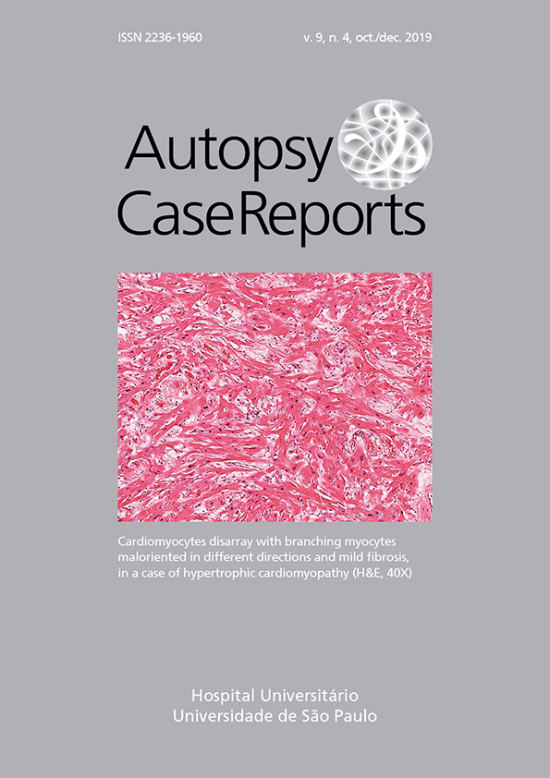Immunohistochemical expression of plasminogen activator inhibitor-1 in subcutaneous versus omental adipose tissue in patients after elective abdominal surgery
DOI:
https://doi.org/10.4322/acr.2019.121Keywords:
Adipose Tissue, Immunohistochemistry, Plasminogen Activator Inhibitor-1Abstract
Plasminogen activator inhibitor-1 (PAI-1) is a biomarker of thrombosis. Adipose and vascular tissues are among the major sources of PAI-1 production. Previous studies indicated that fat deposits mediate increased cardiovascular risk among obese individuals. We investigated the immunohistochemical (IHC) expression of PAI-1 in adipose and vascular tissues from the omentum and the subcutaneous tissue. The pathology samples were selected from 37 random patients who underwent elective abdominal surgery between 2008-2009. PAI-1 expression was semi-quantitatively scored and compared between the groups. Significant differences were noted in the IHC expression of PAI-1 between the omental and the subcutaneous adipose tissues (1.1 ± 0.8 versus 0.8 ± 0.6, respectively (p=0.05)). Adipose tissue displayed higher IHC expression of PAI-1 compared to vascular wall tissue in both omentum and subcutaneous sections (1.1 ± 0.8 versus 0.5 ± 0.9 (p=0.004), and 0.8 ± 0.6 versus 0.4 ± 0.6 (p=0.003), respectively). In conclusion, our study compared PAI-1 expression in the omentum versus the subcutaneous tissue and adipose versus vascular tissues. IHC expression of PAI-1 level was significantly higher in the omental adipose tissue compared to the subcutaneous adipose tissue. Adipose tissue displayed significantly higher PAI-1 expression than vascular tissue. The study elucidates the biological differences of adipose and vascular tissue from subcutaneous versus omental sections.
Downloads
Published
Issue
Section
License
Copyright
Authors of articles published by Autopsy and Case Report retain the copyright of their work without restrictions, licensing it under the Creative Commons Attribution License - CC-BY, which allows articles to be re-used and re-distributed without restriction, as long as the original work is correctly cited.



